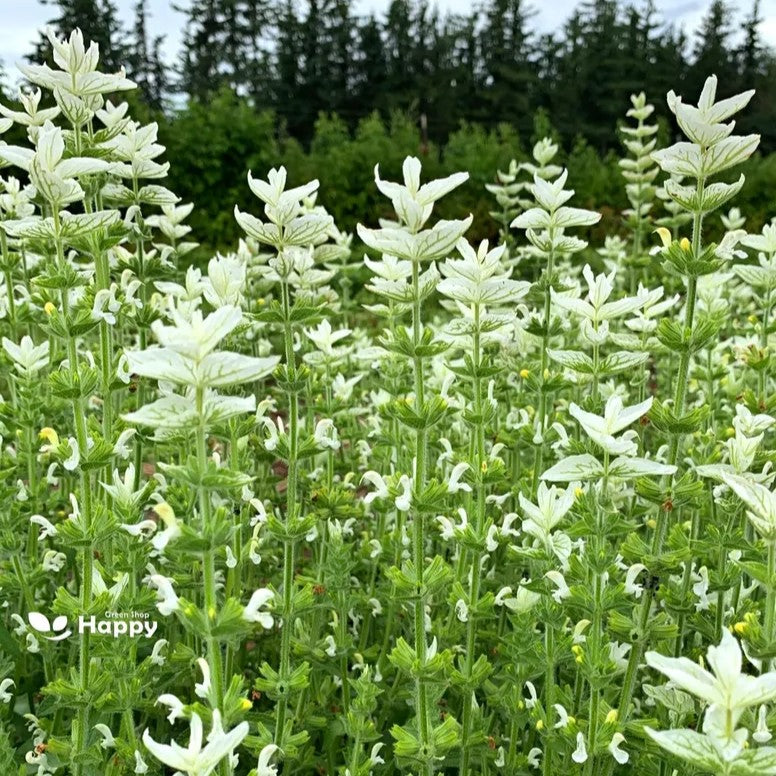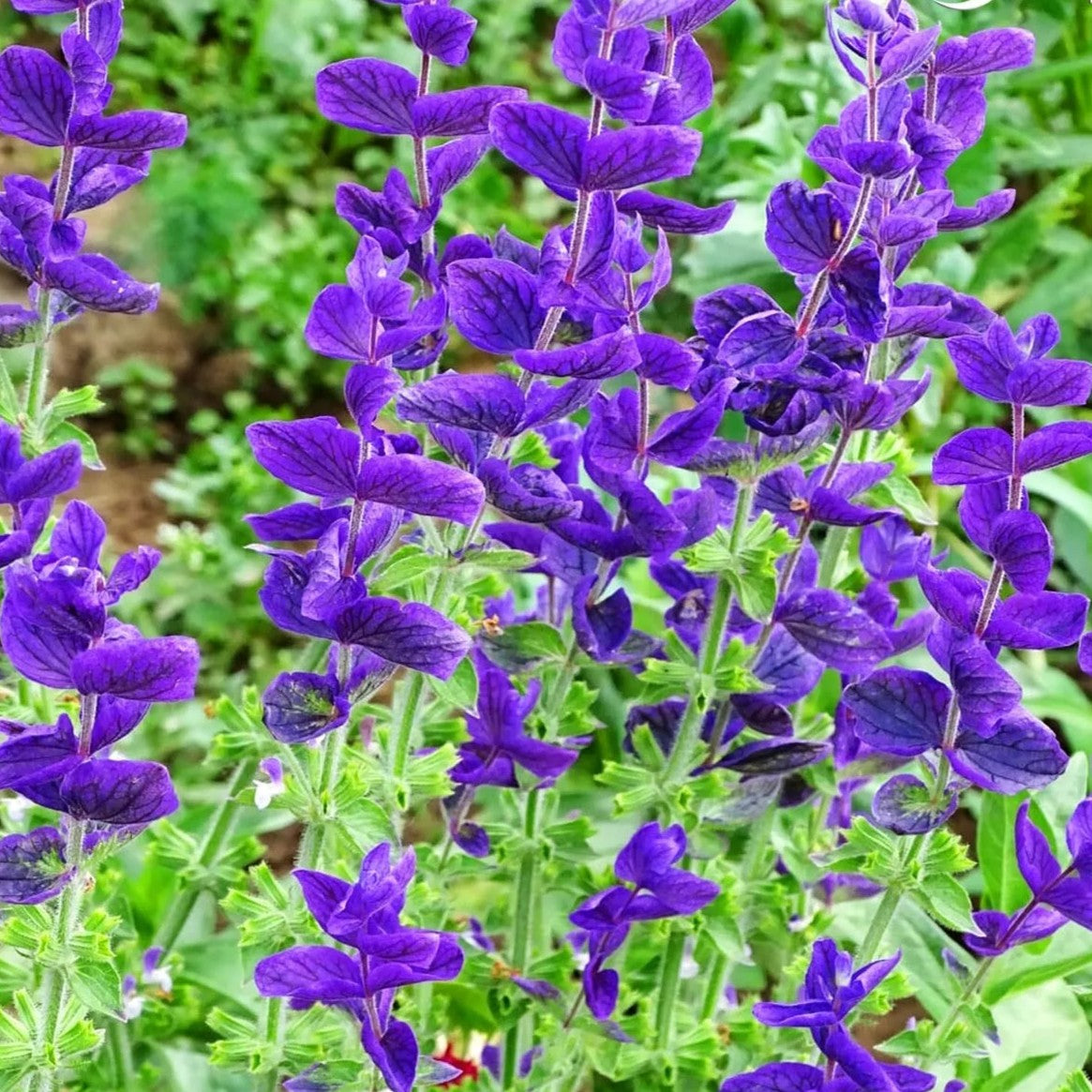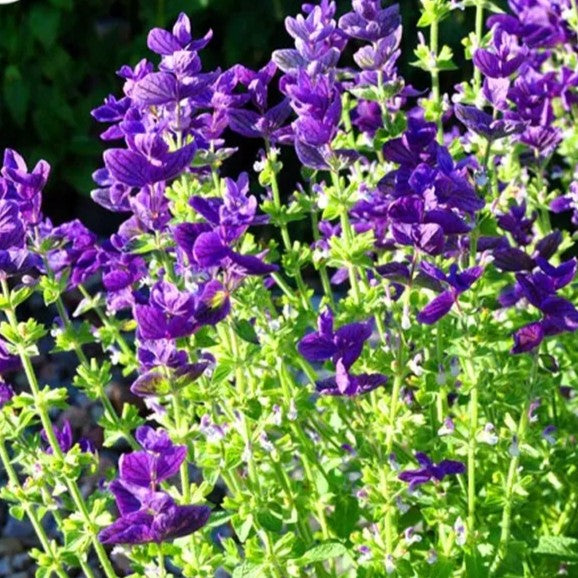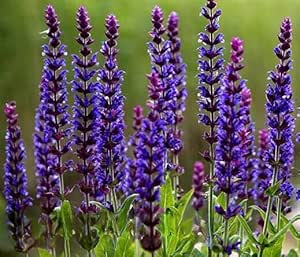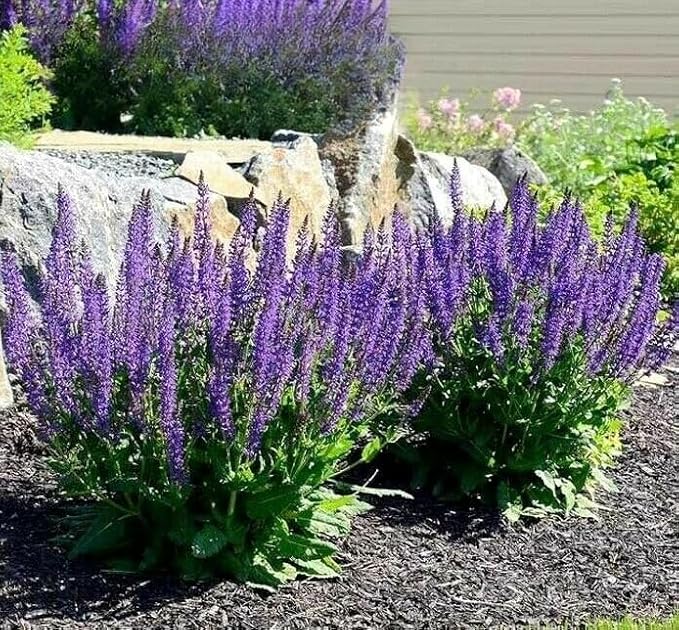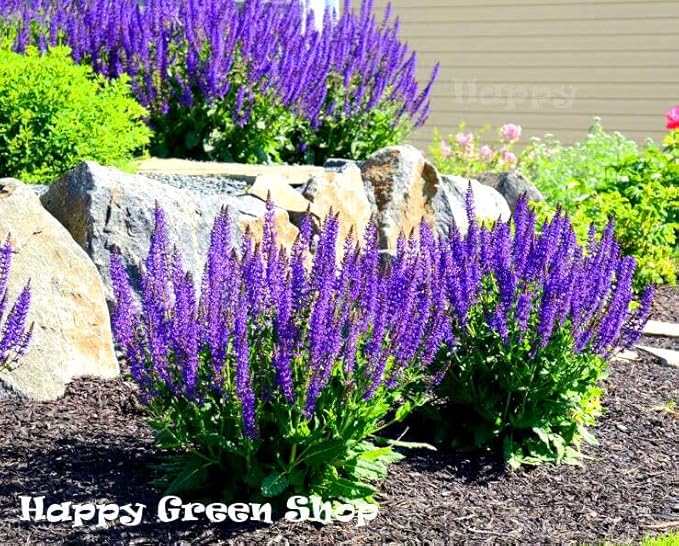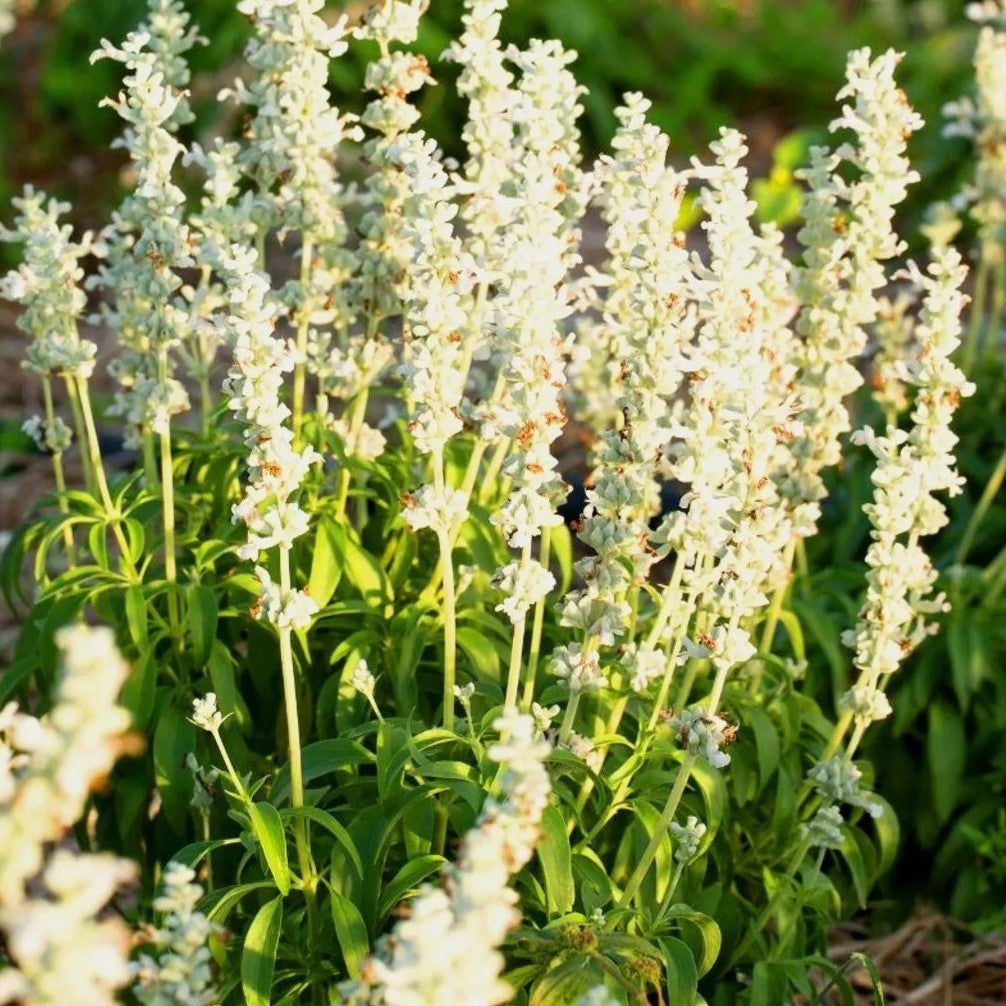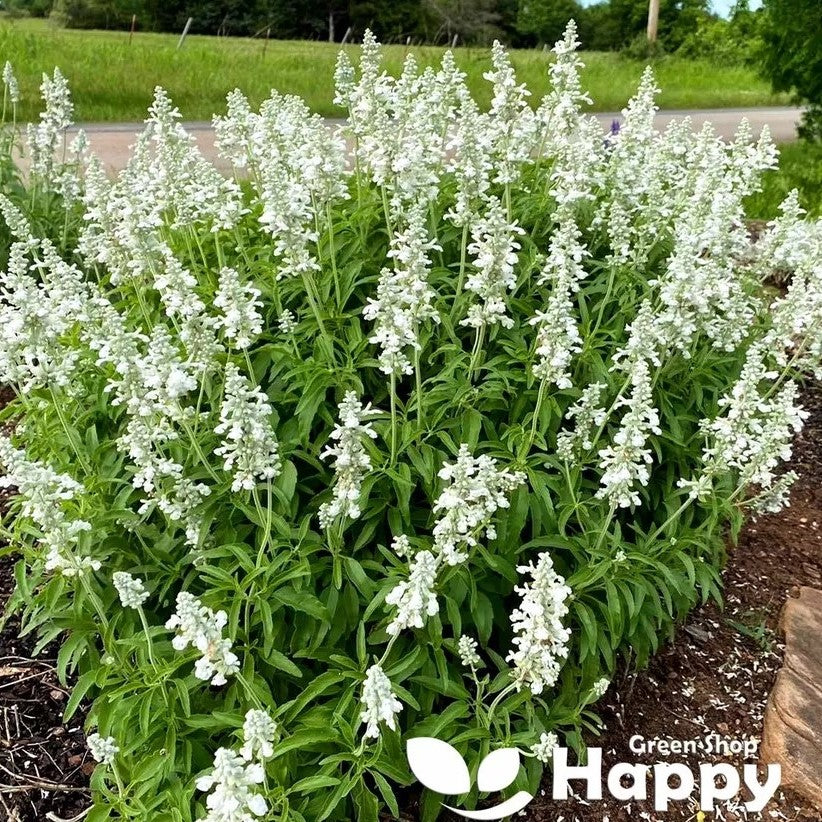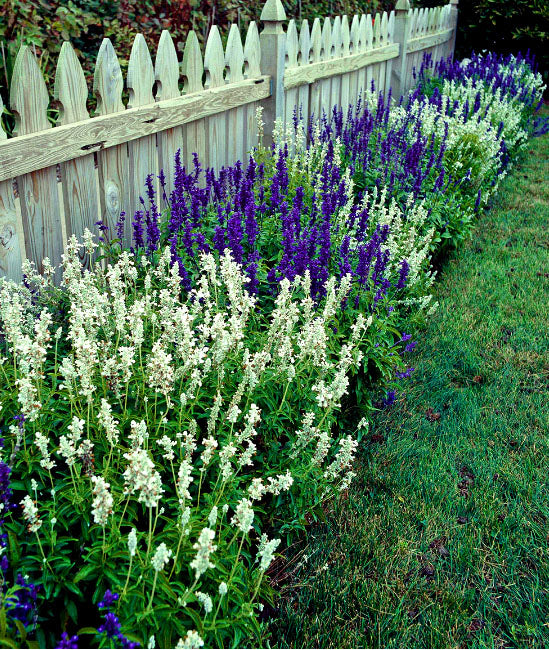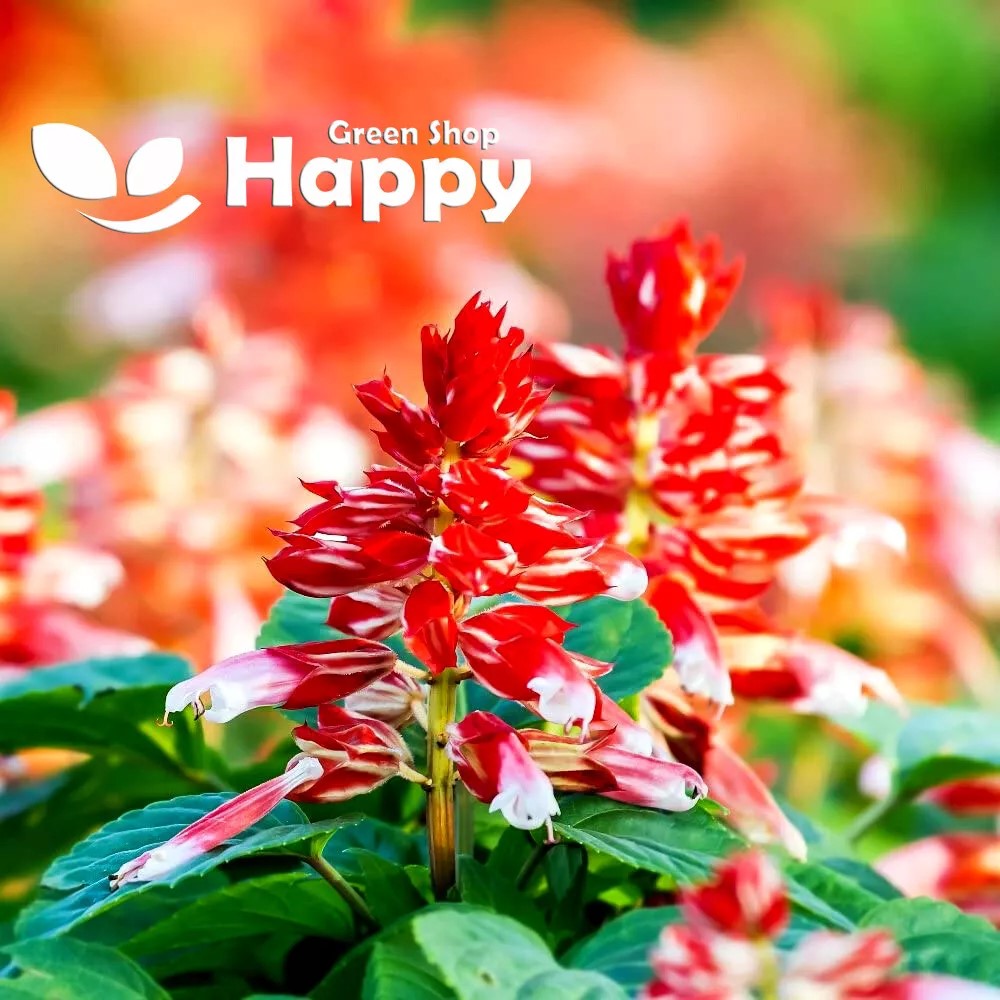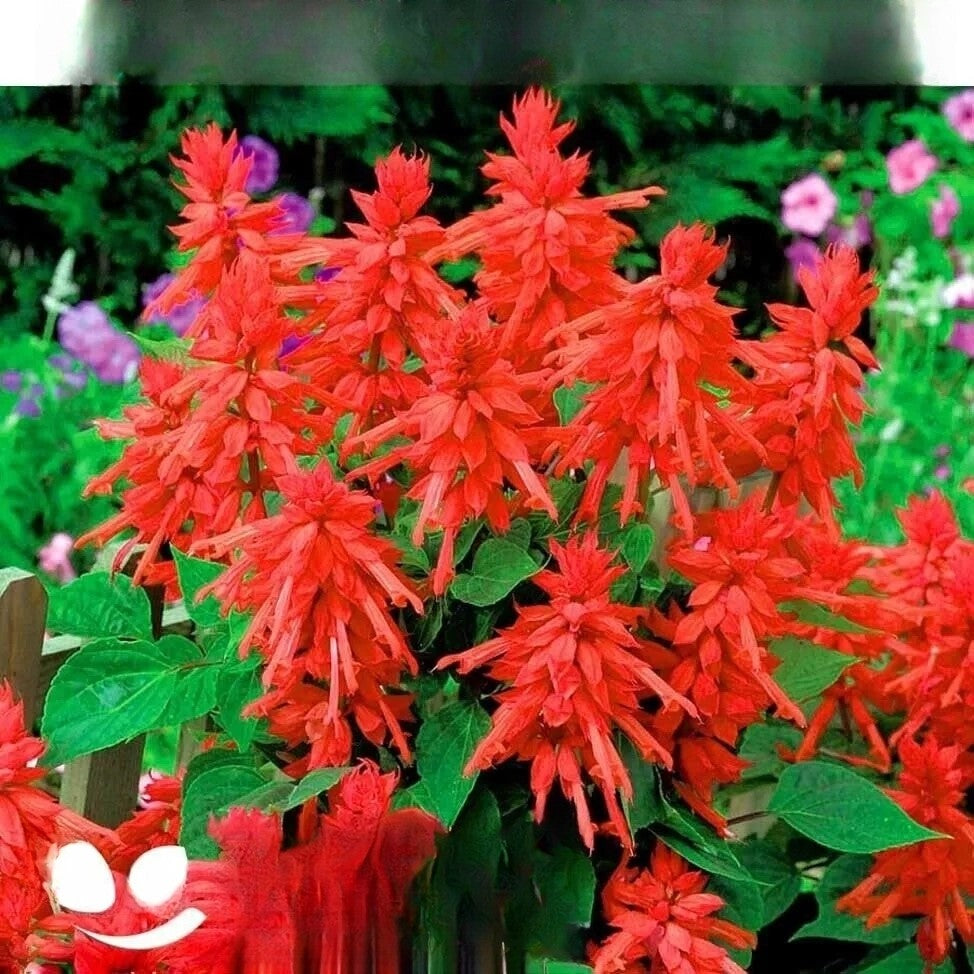Sort by:
7 products
7 products
Clary Sage – White Swan Seeds (Salvia horminum)
Bring elegance and fragrance to your garden with Clary Sage – White Swan (Salvia horminum). This striking annual herb is prized for its large, pure white bracts that surround tiny flowers, creating a dramatic, eye-catching display. Both ornamental and aromatic, it’s an excellent choice for garden beds, borders, and cut flower arrangements.
How to Grow
-
Sow indoors in early spring or directly outdoors after the last frost.
-
Choose a sunny location with well-drained soil.
-
Lightly cover seeds with fine soil and keep moist until germination (10–20 days).
-
Thin seedlings once large enough to handle, spacing them about 20–25 cm apart.
-
Water regularly but avoid waterlogging.
-
Deadhead spent blooms to encourage prolonged flowering.
Key Features
-
Pure white bracts that create a bold floral display
-
Easy-to-grow annual, fast to flower in a single season
-
Aromatic foliage, often used in traditional remedies and crafts
-
Excellent as a cut flower for fresh or dried arrangements
-
Attracts bees, butterflies, and other pollinators
Ideal For
-
Cottage gardens and flower borders
-
Cutting gardens and bouquets
-
Pollinator-friendly landscapes
-
Containers and decorative pots
Sowing
-
Best time: Early spring indoors or outdoors after frost
-
Germination: 10–20 days
-
Sow thinly, cover lightly, and keep soil consistently moist
-
Prefers full sun and well-drained soil
Quick Tip
-
For a longer display, stagger sowings every few weeks during spring and early summer.
CLARY SAGE "BLUE MONDAY" SEEDS (Salvia horminum)
Add striking color and fragrance to your garden with Clary Sage "Blue Monday". This annual produces tall spikes of vibrant blue flowers with aromatic foliage, creating a bold and beautiful display in borders, beds, and containers. Easy to grow and fast-flowering, it attracts pollinators while adding a touch of elegance to your garden.
Why Grow "Blue Monday"
-
Vibrant blue flower spikes with aromatic foliage
-
Fast-growing and easy to maintain
-
Attracts bees, butterflies, and other pollinators
-
Ideal for borders, beds, and containers
Key Features
-
Type: Annual (Salvia horminum)
-
Height: 45–60 cm
-
Flowering: Summer (June–September)
-
Position: Full sun
-
Uses: Borders, flower beds, containers, pollinator gardens
Ideal For
-
Adding bold color to garden borders and beds
-
Container and patio planting
-
Attracting pollinators like bees and butterflies
-
Beginner gardeners seeking easy-to-grow, striking flowers
Sowing & Growing
-
Sow indoors: 6–8 weeks before the last frost
-
Sow outdoors: After frost danger has passed
-
Germination: 10–14 days
-
Space seedlings: 25–30 cm apart
-
Full sun and well-drained soil ensures best flowering
Woodland Sage Seeds (Salvia nemorosa)
Woodland Sage is a hardy perennial prized for its upright spires of violet-blue flowers that bloom from early summer into autumn. With aromatic foliage and a long flowering season, it’s a pollinator magnet, attracting bees and butterflies all season long. Easy to grow and drought-tolerant once established, it’s a reliable choice for borders, cottage gardens, and naturalistic plantings.
What Makes It Special
-
Striking violet-blue flower spikes that bloom for months
-
Attracts bees, butterflies, and pollinators
-
Low-maintenance, hardy, and drought-tolerant
Key Features
-
Botanical name: Salvia nemorosa
-
Hardy perennial
-
Height: 40–60 cm (16–24 in)
-
Bloom time: Early summer to autumn
-
Aromatic foliage
Ideal For
-
Borders and cottage gardens
-
Pollinator-friendly plantings
-
Naturalistic and dry gardens
Sowing
-
Sow indoors Feb–Apr or outdoors Apr–Jun
-
Press seeds lightly into soil; do not cover deeply
-
Germination: 14–21 days at 18–22°C
-
Space plants 30–40 cm apart
-
Flowers from the second year onward
Mealy Cup Sage ‘White Victory’ Seeds (Salvia farinacea)
Add elegance and long-lasting color to your garden with Mealy Cup Sage ‘White Victory’ (Salvia farinacea). This hardy annual produces spikes of pure white flowers above silvery-green foliage, creating a striking vertical accent in borders, beds, and containers. Easy to grow and drought-tolerant once established, it attracts pollinators and offers a long season of interest from summer through autumn.
How to Grow
-
Sow seeds indoors 6–8 weeks before the last frost or directly outdoors after frost risk has passed.
-
Use well-drained soil in a sunny location.
-
Lightly cover seeds with soil and keep moist until germination (10–14 days).
-
Thin seedlings to 25–30 cm apart once established.
-
Water regularly, reducing frequency once plants are established.
-
Deadhead spent flowers to encourage continuous blooming.
Key Features
-
Spikes of pure white flowers above silvery-green foliage
-
Long-flowering annual from summer through autumn
-
Drought-tolerant and easy to grow
-
Excellent for borders, beds, and containers
-
Attracts bees, butterflies, and other pollinators
Ideal For
-
Flower borders and beds
-
Containers, patio planters, and window boxes
-
Pollinator-friendly gardens
-
Cut flower arrangements
Sowing
-
Best time: 6–8 weeks before last frost indoors, or after frost outdoors
-
Germination: 10–14 days
-
Sow thinly, cover lightly, and keep soil moist
-
Prefers full sun and well-drained soil
Quick Tip
-
Deadhead regularly to encourage prolonged flowering and maintain a tidy appearance.
Herb Sage – Seeds
(Salvia officinalis)
Herb Sage is a hardy perennial herb prized for its aromatic leaves and culinary versatility. Perfect for seasoning meats, soups, and sauces, its gray-green foliage also adds texture and fragrance to herb gardens. Easy to grow and drought-tolerant once established, it attracts pollinators and enhances both edible and ornamental plantings.
Why Grow Herb Sage?
-
Aromatic leaves for culinary and medicinal use
-
Hardy perennial, drought-tolerant once established
-
Attracts bees and pollinators
-
Adds texture and fragrance to gardens
Key Features
-
Type: Perennial herb
-
Height: 30–60 cm
-
Flowers: Blue-purple, late spring to summer
-
Position: Full sun
-
Soil: Well-drained, moderately fertile
Ideal For
-
Herb and culinary gardens
-
Pollinator-friendly plantings
-
Containers, borders, and rockeries
-
Perennial garden beds
Sowing & Growing
-
Sow indoors: February–April in seed trays
-
Sow outdoors: April–May directly in prepared soil
-
Germination: 14–21 days at 18–20°C
-
Spacing: 25–30 cm apart
-
Care: Moderate watering; prune after flowering to encourage fresh growth
Sage Red-Orange – Seeds (Salvia splendens)
Sage Red-Orange (Salvia splendens) is a vibrant annual producing striking red-orange spikes of tubular flowers. Blooming from summer to autumn, this heat-tolerant plant adds bold color and vertical interest to borders, containers, and cottage-style gardens. Easy to grow and low-maintenance, it attracts hummingbirds, bees, and butterflies, making it perfect for pollinator-friendly planting and long-lasting summer displays.
Why Grow "Red-Orange Sage"
-
Bold red-orange flower spikes
-
Long flowering season from summer to autumn
-
Easy-to-grow, low-maintenance annual
-
Pollinator-friendly and visually striking
Key Features
-
Type: Annual (Salvia splendens)
-
Height: 40–60 cm
-
Flowering: Summer to autumn
-
Position: Full sun
-
Uses: Borders, containers, cottage gardens, pollinator-friendly beds
Ideal For
-
Adding vertical color to borders and mixed beds
-
Cottage and container gardens
-
Pollinator-friendly garden schemes
-
Summer and autumn garden displays
Sowing & Growing
-
Sow indoors: February–April in trays or pots
-
Sow outdoors: April–May after frost
-
Germination: 10–14 days at 18–22°C
-
Thin seedlings 25–30 cm apart
-
Prefers well-drained soil in full sun
-
Water moderately until established
Sage ‘Tango Red’ – Seeds (Salvia splendens)
Sage ‘Tango Red’ (Salvia splendens) is a striking annual that produces dense spikes of vivid scarlet-red flowers from summer until the first frost. With its compact, bushy habit, it’s perfect for borders, bedding schemes, containers, and mass plantings where vibrant, long-lasting color is desired. Easy to grow and low-maintenance, this variety also attracts bees, butterflies, and hummingbirds, making it both ornamental and wildlife-friendly.
Why Grow "Tango Red"
-
Bright scarlet-red flower spikes all summer long
-
Compact and bushy habit for neat displays
-
Attracts bees, butterflies, and hummingbirds
-
Long-flowering, easy-to-grow annual
Key Features
-
Type: Annual (Salvia splendens)
-
Height: 25–40 cm
-
Flowering: Summer to first frost
-
Position: Full sun
-
Uses: Borders, bedding, mass plantings, containers, pollinator gardens
Ideal For
-
Adding vibrant red color to borders and beds
-
Bedding displays and formal garden designs
-
Patio and balcony containers
-
Pollinator-friendly planting
Sowing & Growing
-
Sow indoors: February–April in trays or pots
-
Germination: 14–21 days at 18–22°C
-
Transplant outdoors after last frost
-
Space seedlings: 20–25 cm apart
-
Prefers fertile, well-drained soil in full sun

